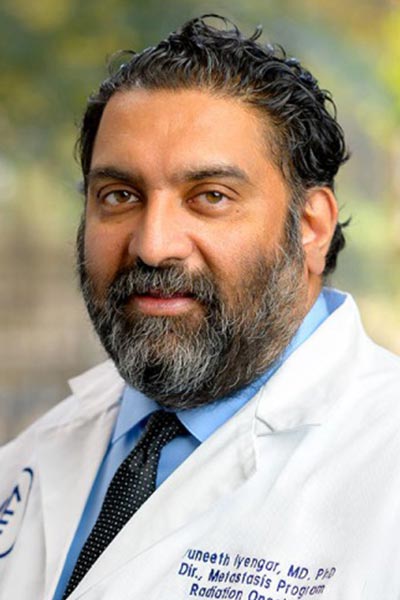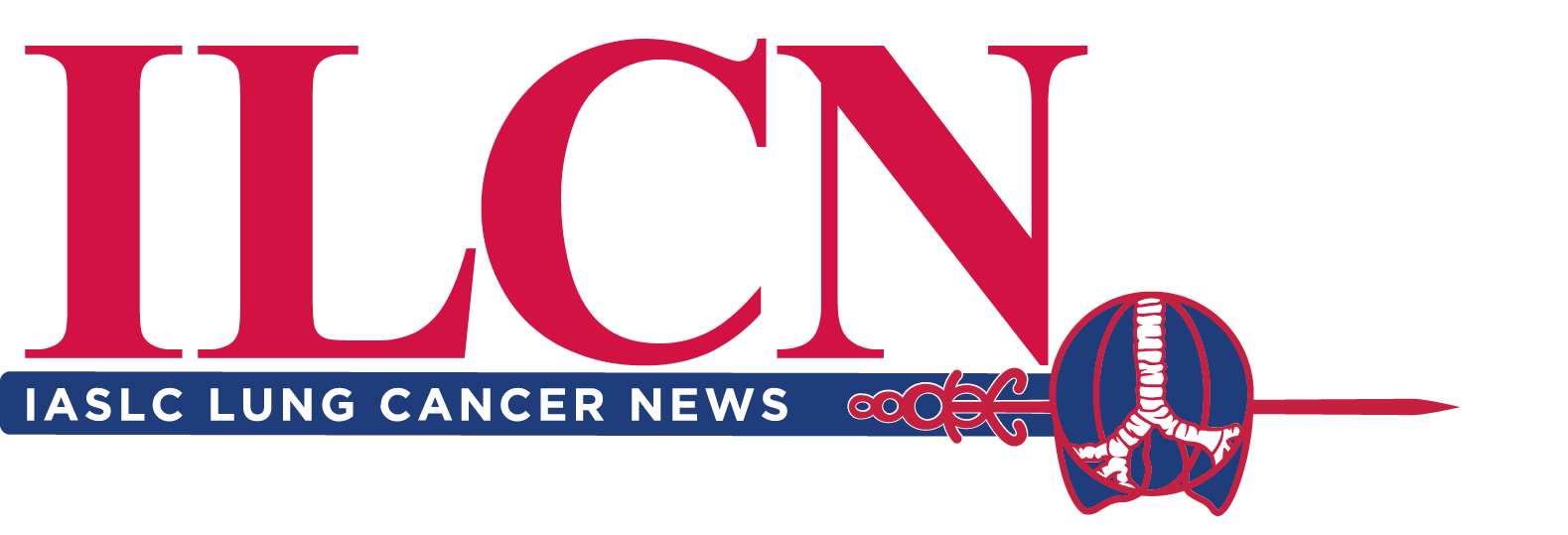Puneeth Iyengar, MD, PhD, and Edward Christopher Dee, MD, recently discussed the environmental costs of cancer treatment in an interview with ILCN. In part two of our series, Dr. Iyengar, a radiation oncologist at Memorial Sloan Kettering Cancer Center (MSKCC), New York, and Dr. Dee, a third-year resident at MSKCC, explore the benefits and challenges of adopting hypofractionated radiation schedules.

ILCN: What is hypofractionation, and how has the approach to treatment shifted toward it?
Dr. Iyengar: At some point, people began to ask, “What if we could deliver high doses of radiation to small volumes of disease over fewer treatments and still have a better chance of permanently eradicating it?”
That led to the development of stereotactic body radiation therapy (SBRT), where imaging on the radiation machines enabled us to pinpoint treatments with millimeter precision.
Since it was a small volume, we could administer a high dose and still avoid the normal tissue side effects. This approach falls under the category of hypofractionation.
ILCN: Where has hypofractionated therapy been successfully implemented?
Dr. Iyengar: We conducted a study at UT Southwestern that demonstrated a dramatic increase in the number of patients receiving hypofractionated radiation over the past 5 to 8 years.
This represents a significant increase in patients who required fewer treatments to eradicate the disease, which benefits everybody.
ILCN: What are some benefits of hypofractionated schedules?
Dr. Iyengar: It’s good for patients, but it’s also good for the environment. Fewer treatments result in reduced use of disposable materials and less patients traveling, which in turn decreases emissions.
But it’s not a zero-sum game, meaning you can then treat more patients. So, the real question is whether treating more patients leads to a net benefit in emissions and environmental effects.
I believe if you add everything up, it’s probably more beneficial in the long run. Treating more patients in fewer visits reduces how often the machine is operating, assuming there is a plateau in patient volume.

Dr. Dee: One of the positive externalities of shorter treatment regimens is the cost savings and improved quality of life for patients.
What’s been particularly exciting in our field is finding that, in many cases, hypofractionation yields equivalent outcomes across different disease entities, including prostate, breast, lung, and metastatic diseases, if we focus solely on clinical outcomes.
ILCN: Where do you believe hypofractionated treatment would be advantageous?
Dr. Iyengar: Hypofractionation is an effective approach that should be utilized in developing countries with limited resources. It’s economically beneficial for patients and addresses challenges related to pollution and long-distance travel to treatment facilities.
In 2011, I attended a conference in India where hypofractionation was being optimized for breast cancer and other types of cancers to minimize patient travel. If this were implemented globally, hypofractionation could potentially decompress street congestion, which would be particularly valuable in cities with extreme pollution.
Dr. Dee: I’m originally from the Philippines, where geographical barriers make daily radiation treatments challenging for patients.
Some patients already face financial toxicity due to the cost of treatment, as well as indirect financial costs, such as missing work or arranging childcare. Patients may also have additional expenses to travel by boat or to stay in a hotel during their treatment.
These indirect costs add up and can negatively impact patients, even in countries with single-payer systems like Malaysia and Thailand.
ILCN: Why hasn’t hypofractionation been more widely adopted?
Dr. Iyengar: Like all aspects of oncologic management, hypofractionation must be data-driven. We need trials that show hypofractionation is safe and equally, if not more, effective in terms of tumor control. We also need sufficient long-term follow-up to ensure that side effects don’t manifest years later.
In certain scenarios, hypofractionation for breast cancer has been widely adopted; however, in lung cancer, for example, we haven’t proven its safety across all stages and performance statuses.
Additionally, longer treatment regimens may offer greater economic benefits in some cases.
Dr. Dee: In some settings, there are technical limitations in delivering hypofractionated regimens. We previously treated and sculpted based on the two-dimensional projections of the targeted organs; however, this approach doesn’t sculpt the same way that newer technologies can.
In the case of prostate cancer, what once required 40 treatments can now be condensed into one to five treatments, depending on the protocol. This is due to the development of techniques that can sculpt the dose into better, tighter shapes.
However, these advanced techniques have many layers and are not omnipresent throughout the world. This can pose a challenge in countries where implementing these new technologies is too costly for the healthcare systems, so clinicians must be more conservative with the dose per fraction.
ILCN: What factors could promote the wider adoption of hypofractionation?
Dr. Iyengar: You must present the data to the patients in a clear and understandable way. Most patients want a treatment that’s more effective in controlling their tumor, has equal or fewer side effects, and requires fewer treatment sessions.
Once it’s established as a standard of care, I think most people would choose hypofractionation, unless they feel there’s insufficient follow-up data.
Dr. Dee: I agree. Ultimately, clinicians must translate the science into something that’s acceptable for patients. How can you package the information in a way that’s informed by cultural humility and is tailored to each patient’s unique level of health literacy?
When we think of informed consent, we often overlook the importance of the first word, “informed.” Ensuring that our patients are truly informed is something that is our responsibility.





